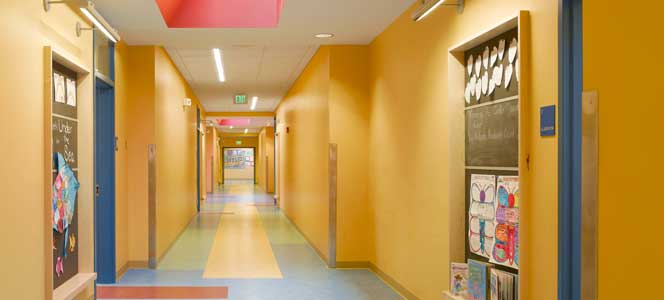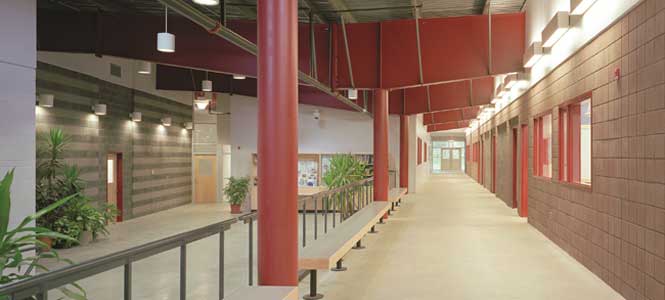Digital Crayon: Engaging Design
Architects take many approaches to making successful buildings. Some architects design based on an abstract idea, others see their work more as sculpture or art. Our goal is create environments with a sense of place that engages its users.
What does this mean? We believe buildings should be of their time and place, leveraging the best in current technologies, responsive to climate and site, and utilizing local materials and forms. They should resonate with a sense of place unique to their context, which is both physical and cultural. In short, the design should express the values of the institution.
A school building can engage its students by employing a design language suited to their age group. A design language can include building organization, formal elements, scale and color.
- Building Organization – how the building is organized can speak volumes about an institution. What does a rigidly symmetrical composition say, with administration at the center? This design approach speaks about tradition and centralized power. Conversely, creating school that is a village of small buildings tells another story, perhaps about creating community from this family of buildings. Selecting an approach that expresses a school’s values is fundamental to engaging students in their educational experience.
- Formal elements includes shapes and forms of walls, roofs and openings. Each choice sends various messages to the user. Gable roofs and vertical openings remind us of houses while flat roofs are more institutional in nature. Simple shapes often resonate for young children. Curves and organic forms, in combination with certain materials, evoke a sense of nature for many people.
- Scale refers to size. It could be the size of buildings and spaces, or the height of roof edges, countertops, window sills and hand railings. With schools, there is a big physical size and psychological development difference among different age groups. By gearing the design to the appropriate age group, we can create environments suited (and sized) to its users.
- Color is an inexpensive and powerful way to enliven an environment. Certain colors excite, others soothe. Color can be used to break down the scale of a large building and mitigate an institutional feel. Similar to formal elements, younger children often connect with brighter, primary colors – older students with more muted tones.
The right combination of these elements can create environments that engage its users and resonates with a unique sense of place. The idea is that if you were blindfolded and brought to an unknown school building, upon seeing you should have a sense of the region, age group, building use and values of the institution. And of course, you should be saying “Wow” If all that were to happen, we are all on the path to creating a successful learning environment.
Architect and Managing Principal David Epstein presents locally and national on the topic of 21st-century school design.

